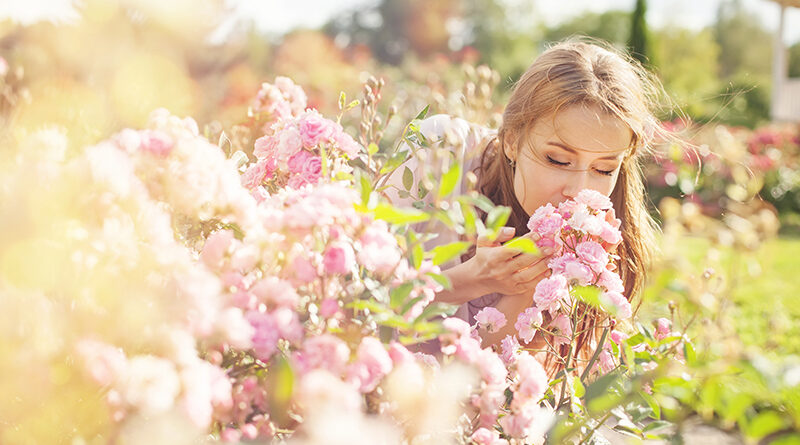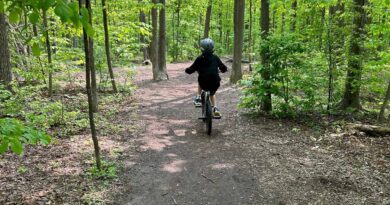The Nose Knows…
Stop for a moment. Take one large breath in and smell the air around you. With every breath in and every breath out (about 23,000 times per day), we smell the world around us. We are awash in odours of all kinds, from the pleasant fragrance of Lily or the sharp and pungent smell of fire. The latest research suggests that our sense of smell is far more sensitive than we give it credit for. If a friend is happy, they release subtle odours that make us happy – or if they are stressed or upset, we pick that up too – unconsciously of course. A 2014 study revealed that we detect up to 1 trillion distinct odours. In our technologically saturated world, we really are only activating our sense of sight and hearing. Some educators have argued that our children experience a measure of sensory anesthesia – a dulling of their senses. By exercising our sense of smell, we are enhancing our connection to the natural systems that sustain and nurture us all. Here are activities to help you and your children appreciate the amazing symphony of smells that infuse the forests around us.
Scratch and Sniff
Next time you go for a walk, take along some small pieces of sponge and some water. Dab a moistened sponge under everyone’s nose; just a little moisture on the upper lip will suffice. The wetness under your nose helps you to distinguish more odours. Now try a little “scratch and sniff.” Gently rub the leaves of different trees and shrubs between your fingers. As you walk, rub moss and sniff. Gently caress some lichen and sniff. Take a small pinch of soil from a few different parts of the forest or field – do they smell different? Some farmers can gauge the fertility of the soil by its smell. Continue to caress and smell various parts of the natural world including leaves, bark and twigs. The idea is to be gentle – you don’t need to rub much to release an odour. If you have small children with you, make sure they rub what you rub just to ensure that they are not touching something that may be hazardous (poison ivy, giant hogweed etc.).
Smell Cocktail
Now that you’ve practicing sniffing – you are ready for a cocktail party! Why not create your very own smell cocktail? You’ll need a few paper cups and a small twig as a swizzle stick. As you hike, encourage participants to selectively harvest tiny “bits” of the forest (e.g., a pinch of soil, a part of a leaf, a petal of a wildflower, a bud, a smidgen of moss or a flake of bark). Always talk about careful and selective harvesting (taking just a tiny bit from here and a bit from there). And if you can, practice reciprocity by planting some seeds. I often take along native wildflower seeds that I’ll sprinkle near wherever we have been harvesting.
Place each natural bit of nature in your cup. Use the stick to gently crush the material inside your cup. This will help release the odours. You now have created your very own smell cocktail. Give each smell cocktail creation a name, perhaps “Pinesappyness” or “Woodilicious.”
Scent Trails
Imagine this: Your eyes are closed, and you hunker down. You fill your lungs full of fresh air and you pick up a scent. It is the familiar odour of your friend Rick and you can tell that he passed right by your front door, headed for downtown. You use your nose and you follow his scent right to a convenience store just in time to share his bag of chips. If only that were true!
Unfortunately our human nose isn’t sensitive enough to follow scent trails. But many animals can. Canids (or members of the dog family) including foxes, coyotes, wolves and dogs, have an incredible sense of smell – many thousands of times better than a human. A larger portion of their brain is given over to scent perception. They can distinguish between many different types of smell. We might say, “hmmm mac and cheese.” They might say “hmmm noodles and cheese and butter and salt and milk and bread crumbs and metal pot and Aunt Marge must have just made this.” Animals take short and deep sniffs to isolate and follow a scent.
In this game you’ll be given a “helping nose” so that you can follow a scent trail to something delicious. Work in partners. One person is blindfolded while the other lays down a scent trail with extract. You can use simulated extract. Try lemon, almond, mint, maple and orange extract. You only need a drop or two every foot or so for about five feet. Try to lay down a curving, sweeping trail to make things more challenging. At the end of the scent trail, place a wrapped mint. Guide the blindfolded partner to the beginning of your trail and let them use their nose to follow the trail. And if you are lucky, just like a hunting fox following the trail of a rabbit, there might be something tasty at the end of your journey!
Submitted by Jacob Rodenburg, Executive Director of Camp Kawartha, an award-winning outdoor education centre and summer camp.




